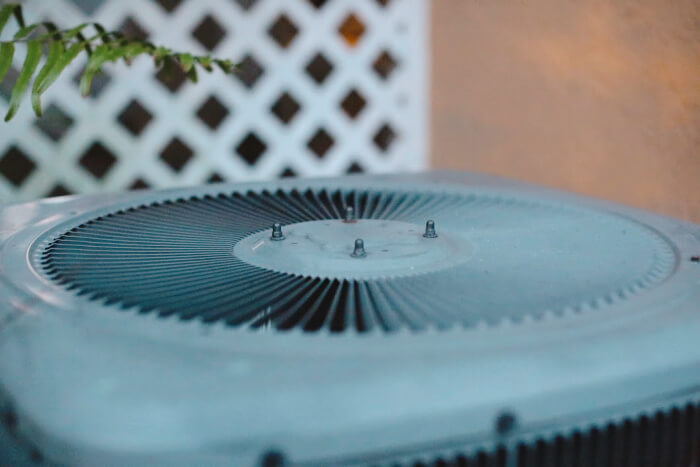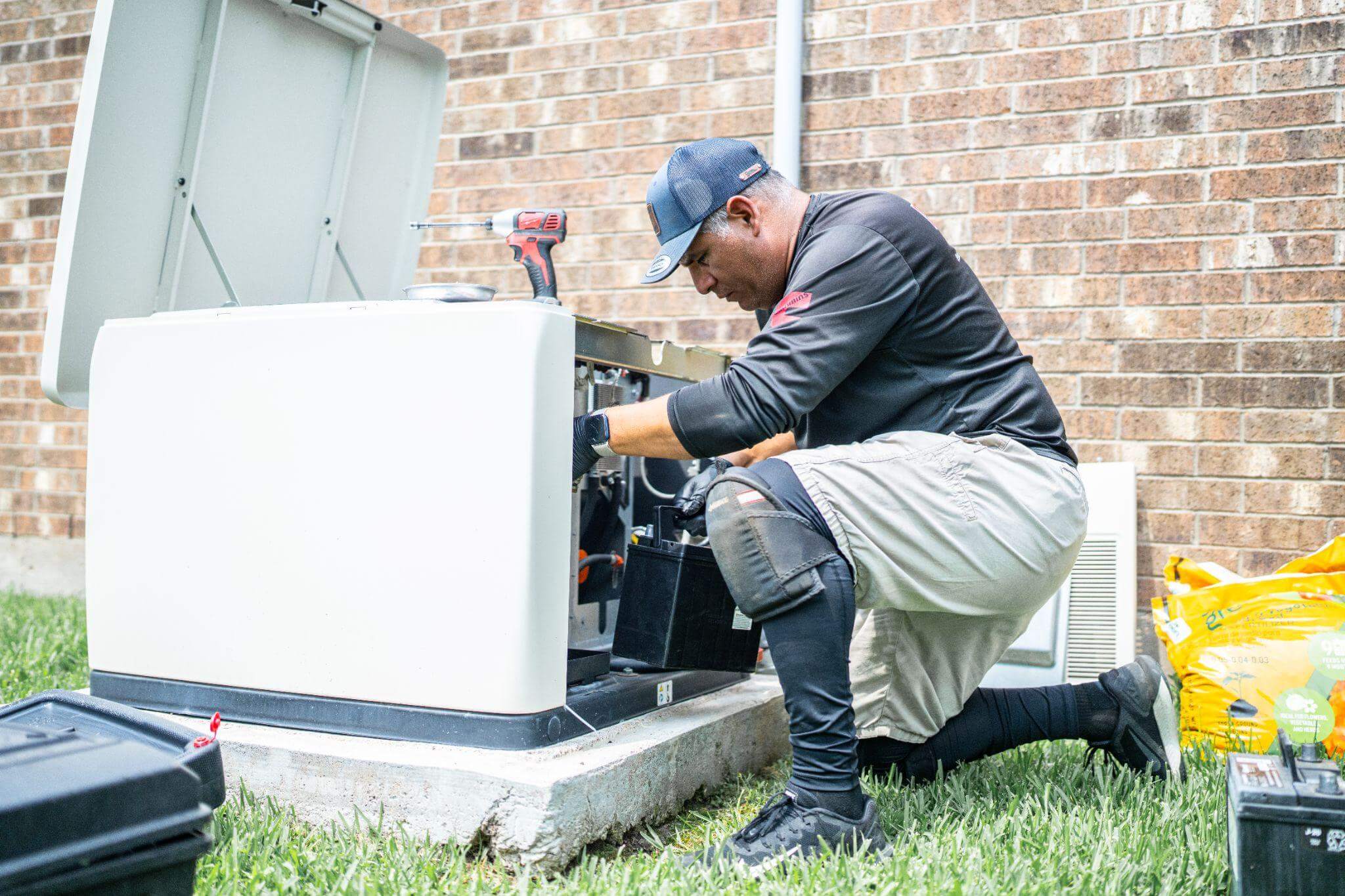Are you doing an HVAC project?
Modernize can pair you with three to four pros in your area, so you can compare options and save time and money.
Unless you professionally work with air conditioning systems, you probably haven’t heard about the new regulations regarding the R22 Freon phase-out. If your home has an older air conditioning unit, anything installed before 2010, it’s likely that R22 Freon is the coolant used for the system. A proven contributor to ozone depletion, R22 Freon is a chemical that is slowly but surely being phased out of air conditioning units in the United States. When it comes time to repair or replace your HVAC system, you’ll likely need to understand what R22 Freon is and what your alternatives are.
Not sure if your home currently has R22 Freon powering your air conditioning system? Let’s break down what makes R22 Freon dangerous for the environment, and how you can make sure your home’s air conditioning system is up to date.
What Exactly is R22 Freon?
Introduced in the 1950s, R22 Freon was the common refrigerant installed in air conditioning units until around 2010. Recent studies have found that R22 Freon negatively impacts the ozone layer. As R22 Freon is phased out, the chemical is increasing in price point, as depleting levels make it more difficult to acquire.
To determine whether your home air conditioning uses R22 Freon, check the nameplate on your appliance. The nameplate is commonly placed on the outside condenser of your AC unit, but if the user’s manual for your system.
Why is the R22 Freon Phase Out Happening Now?
According to the EPA, ozone-depleting substances are classified as class one or two substances. As R22 Freon is considered an ODS, importing or purchasing R22 Freon is highly regulated and banned in most cases. With the exception of recycled quantities of the chemical, R22 Freon isn’t on the market for purchase as of 2020.
Alternatives for R22 Freon
HVAC professionals are opting for R22 Freon alternatives as it’s difficult and expensive to acquire the refrigerant with new regulations. Though the shortened names can be a little confusing, the current leaders in non-ozone depleting refrigerants include AZ-20, or “410 A,” 404 A, 407 D and 422 D.
The most common replacement for R22 Freon is R410A, which isn’t compatible with all refrigeration or AC systems. If you find that your air conditioning unit is designed for R22 Freon use, discuss the alternatives with your HVAC contractor to find the best ozone-friendly solution for your home.
Cost to Update
Depending on the city in which you live and your specific repair needs, the cost of updating your refrigerant from R22 Freon varies. On average, air conditioning professionals charge $300 for labor and the cost of parts plus a $50 to $100 service fee in the United States. Basically, if an HVAC professional comes out to repair your home you can expect to pay $100 at the bare minimum.
Though upfront payments to get your refrigerant up to code can be a nuisance, the cost of keeping R22 Freon in your air conditioning unit will end up costing you more as it increases in price and becomes outdated. If you don’t think you can afford the upfront cost of switching, there are finances alternatives you can pursue to help make payments more manageable.

Find the Right Contractor for Your HVAC Project
Whether you’re ready to begin your project now or need some expert advice, our network of contractors are here to help. With a few simple questions, we’ll find the best local professionals for you
Financing your new air conditioning solution
There are different ways to finance your home repairs, depending on what situation you find yourself in. Here are some common ways to pay for repairs:
- Emergency savings: If you already have an emergency savings fund, withdrawing from it to make necessary home repairs is what it’s there for.
- 0% APR credit card: If you have good credit, you could consider applying for a credit card with a 0% APR promotional period. If you repay the funds before the promotional period expires you won’t have to pay any interest on them.
- Personal loan: A personal loan could be a way of keeping interest fees low when you borrow money for home repairs.
Other Environmentally Friendly Home Improvements
As we learn about chemicals and materials that harm our environment, every household can do their part to make sure their homes aren’t contributing to the depletion of the ozone layer and further damage to the planet. In fact, the green building market is one of the fastest-growing industries on a global scale.
Opt for natural cleaning alternatives
There are a plethora of materials you can find in everyday households that contribute to the depletion of the ozone layer. Fumigants, aerosol sprays, industrial solvents, foaming cleaning agents and electrical equipment are all substances that commonly contribute to ozone depletion. Opt for natural alternatives that address environmentally friendliness in production and overall impact.
Purchase products made with recycled materials
From toilet paper and paper towels to recycled wood for home repair projects, purchasing recycled materials can be a great way to give the environment a break. Products made with recycled materials typically say so on their packaging. Paying an extra dollar or two for home goods made with recycled materials can be well worth the investment when you weigh the environmental benefits.
Consider installing solar panels
At the conclusion of 2018, solar power generated enough energy to power 12.3 homes in the United States. You can end up saving significant money on your monthly electricity bill by installing solar panels in your home. If being energy efficient is high on your priority list, installing solar panels is a great step to getting there.
We can all take steps to become more environmentally friendly, including actions as small as replacing the type of coolant used in your home’s air conditioning system. If you want to learn more about the recent R22 Freon phase-out and what you can do to make your home more environmentally conscious, you can visit the Environmental Protection Agency website.
Find the Right Contractor for Your HVAC Project
Whether you’re ready to begin your project now or need some expert advice, our network of contractors are here to help. With a few simple questions, we’ll find the best local professionals for you
Reviews from Real Homeowners
Welcome to Homeowner Resources! We are the Modernize blog. Modernize pairs more than 3 million homeowners a year with pre-vetted contractors in their area. This blog started because we believe homeowners should know everything about their homes, from how their HVAC works to which front door colors they might love. On Homeowner Resources, you can find information on every part of your home, right down to how you can negotiate with contractors to get the best price. Here's more about the blog.
Need a contractor? Learn more about how Modernize finds the right pro for you.

